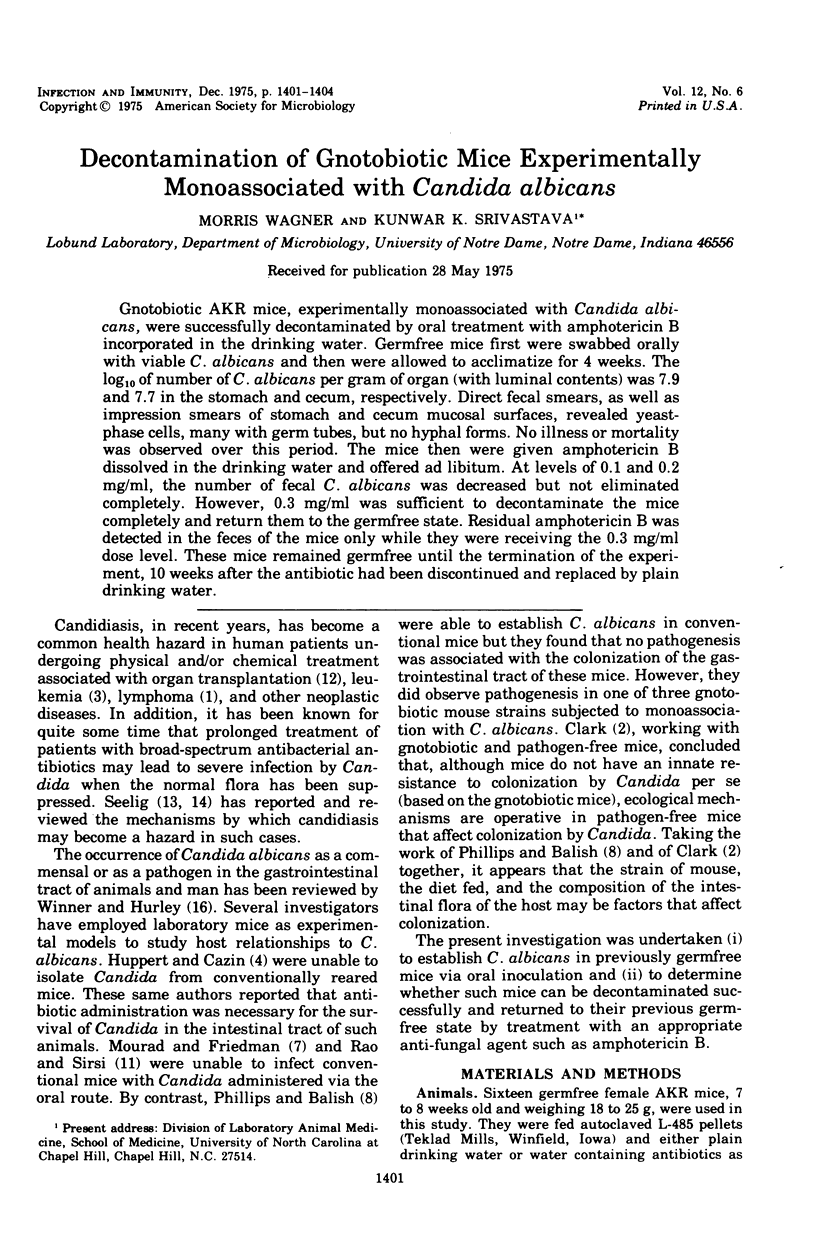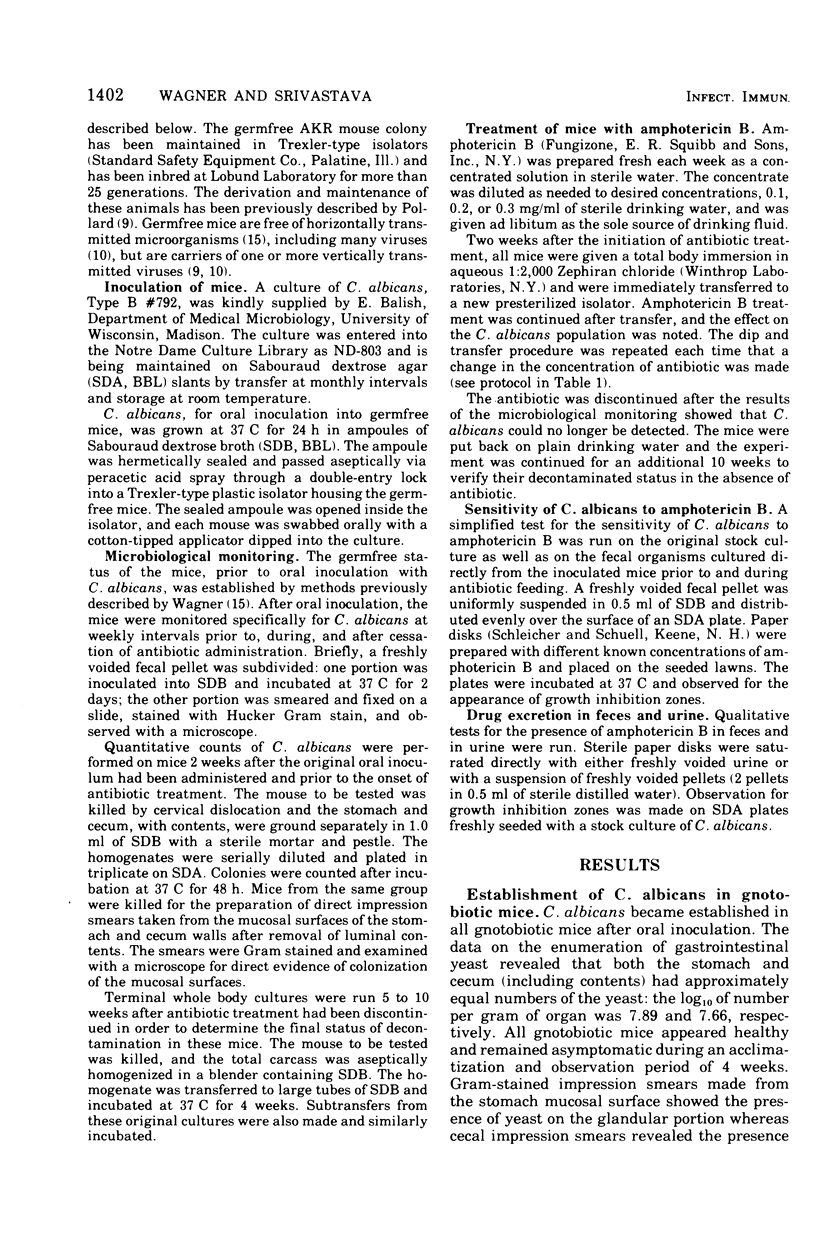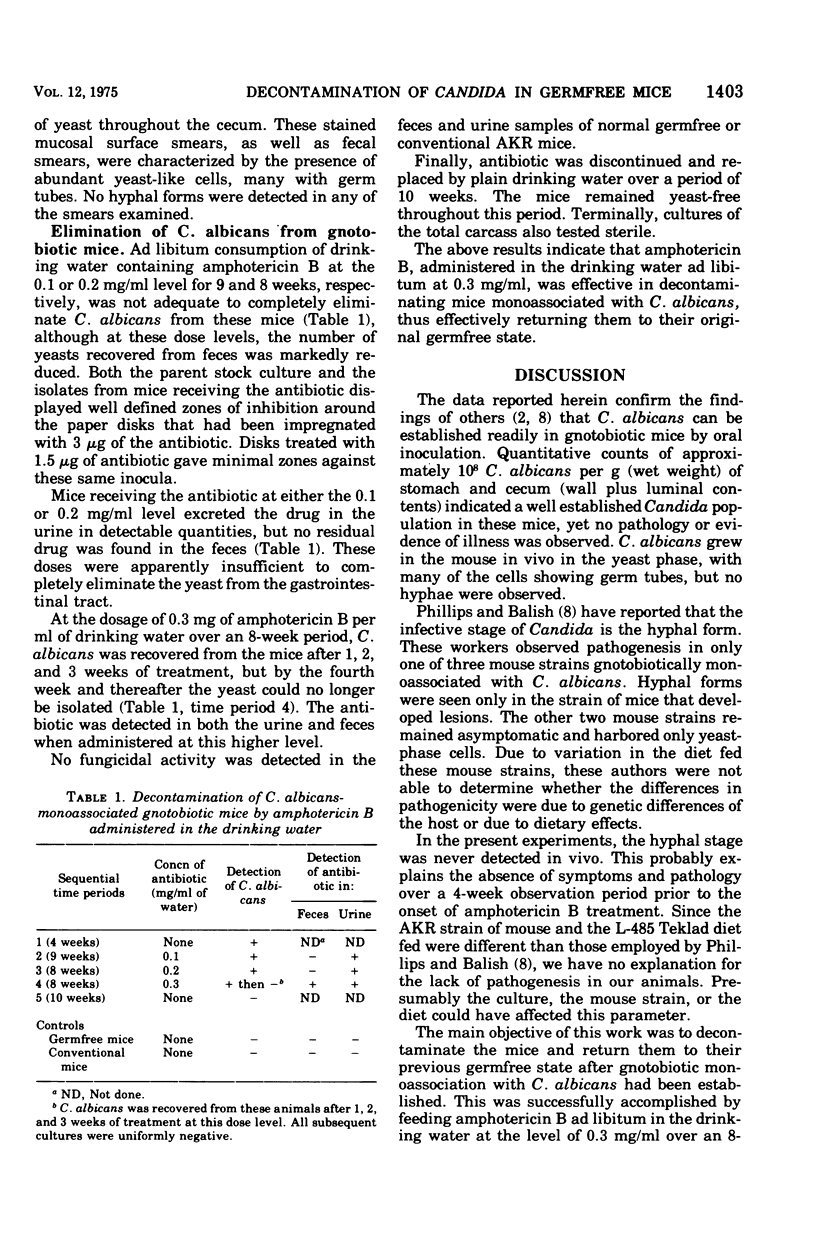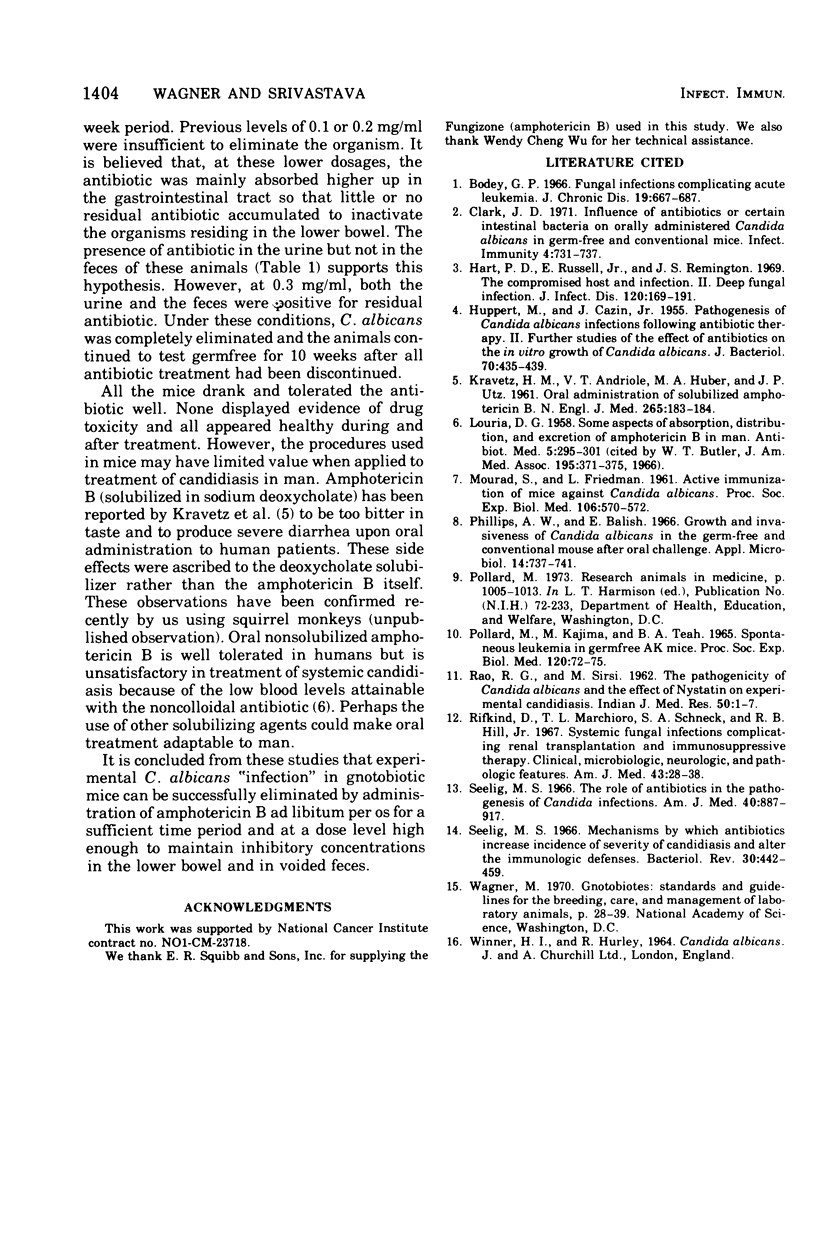Abstract
Gnotobiotic AKR mice, experimentally monoassociated with Candida albicans, were successfully decontaminated by oral treatment with amphotericin B incorporated in the drinking water. Germfree mice first were swabbed orally with viable C. albicans and then were allowed to acclimatize for 4 weeks. The log10 of number of C. albicans per gram of organ (with luminal contents) was 7.9 and 7.7 in the stomach and cecum, respectively. Direct fecal smears, as well as impresssion smears of stomach and cecum mucosal surfaces, revealed yeastphase cells, many with germ tubes, but no hyphal forms. No illness or mortality was observed over this period. The mice then were given amphotericin B DISsolved in the drinking water and offered ad libitum. At levels of 0.1 and 0.2 mg/ml, the number of fecal C. albicans was decreased but not eliminated completely. However, 0.3 mg/ml was sufficient to decontaminate the mice completely and return them to the germfree state. Residual amphotericin B was detected in the feces of the mice only while they were receiving the 0.3 mg/ml dose level. These mice remained germfree until the termination of the experiment, 10 weeks after the antibiotic had been discontinued and replaced by plain drinking water.
Full text
PDF



Selected References
These references are in PubMed. This may not be the complete list of references from this article.
- Bodey G. P. Fungal infections complicating acute leukemia. J Chronic Dis. 1966 Jun;19(6):667–687. doi: 10.1016/0021-9681(66)90066-x. [DOI] [PubMed] [Google Scholar]
- Clark J. D. Influence of antibiotics or certain intestinal bacteria on orally administered Candida albicans in germ-free and conventional mice. Infect Immun. 1971 Dec;4(6):731–737. doi: 10.1128/iai.4.6.731-737.1971. [DOI] [PMC free article] [PubMed] [Google Scholar]
- HUPPERT M., CAZIN J., Jr Pathogenesis of Candida albicans infection following antibiotic therapy. II. Further studies of the effect of antibiotics on the in vitro growth of Candida albicans. J Bacteriol. 1955 Oct;70(4):435–439. doi: 10.1128/jb.70.4.435-439.1955. [DOI] [PMC free article] [PubMed] [Google Scholar]
- Hart P. D., Russell E., Jr, Remington J. S. The compromised host and infection. II. Deep fungal infection. J Infect Dis. 1969 Aug;120(2):169–191. doi: 10.1093/infdis/120.2.169. [DOI] [PubMed] [Google Scholar]
- KRAVETZ H. M., ANDRIOLE V. T., HUBER M. A., UTZ J. P. Oral administration of solubilized amphotericin B. N Engl J Med. 1961 Jul 27;265:183–184. doi: 10.1056/NEJM196107272650409. [DOI] [PubMed] [Google Scholar]
- LOURIA D. B. Some aspects of the absorption, distribution, and excretion of amphotericin B in man. Antibiotic Med Clin Ther (New York) 1958 May;5(5):295–301. [PubMed] [Google Scholar]
- MOURAD S., FRIEDMAN L. Active immunization of mice against Candida albicans. Proc Soc Exp Biol Med. 1961 Mar;106:570–572. doi: 10.3181/00379727-106-26405. [DOI] [PubMed] [Google Scholar]
- PRASAD B. G., MATHUR G. B. Intradermal test in ankylostomiasis. Indian J Med Res. 1962 Jan;50:1–5. [PubMed] [Google Scholar]
- Phillips A. W., Balish E. Growth and invasiveness of Candida albicans in the germ-free and conventional mouse after oral challenge. Appl Microbiol. 1966 Sep;14(5):737–741. doi: 10.1128/am.14.5.737-741.1966. [DOI] [PMC free article] [PubMed] [Google Scholar]
- Pollard M., Kajima M., Teah B. A. Spontaneous leukemia in germfree AK mice. Proc Soc Exp Biol Med. 1965 Oct;120(1):72–75. doi: 10.3181/00379727-120-30446. [DOI] [PubMed] [Google Scholar]
- Rifkind D., Marchioro T. L., Schneck S. A., Hill R. B., Jr Systemic fungal infections complicating renal transplantation and immunosuppressive therapy. Clinical, microbiologic, neurologic and pathologic features. Am J Med. 1967 Jul;43(1):28–38. doi: 10.1016/0002-9343(67)90146-5. [DOI] [PubMed] [Google Scholar]
- Seelig M. S. Mechanisms by which antibiotics increase the incidence and severity of candidiasis and alter the immunological defenses. Bacteriol Rev. 1966 Jun;30(2):442–459. doi: 10.1128/br.30.2.442-459.1966. [DOI] [PMC free article] [PubMed] [Google Scholar]
- Seelig M. S. The role of antibiotics in the pathogenesis of Candidainfections. Am J Med. 1966 Jun;40(6):887–917. doi: 10.1016/0002-9343(66)90204-x. [DOI] [PubMed] [Google Scholar]


